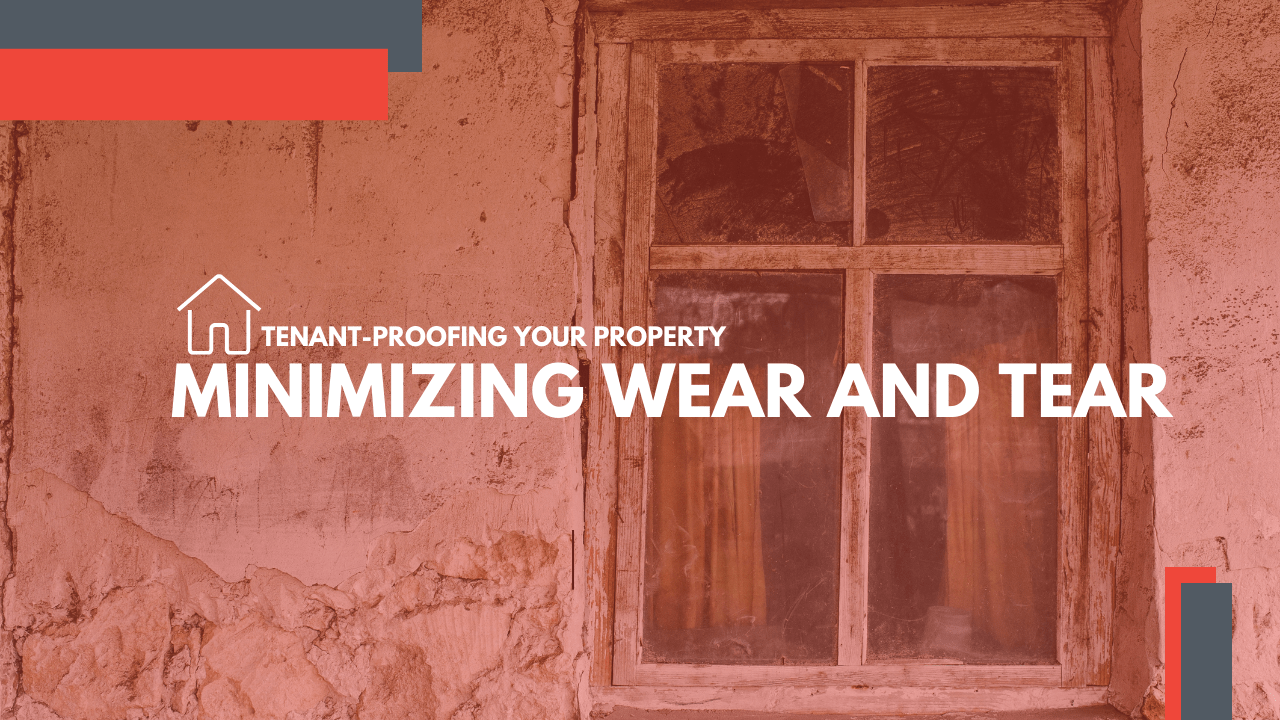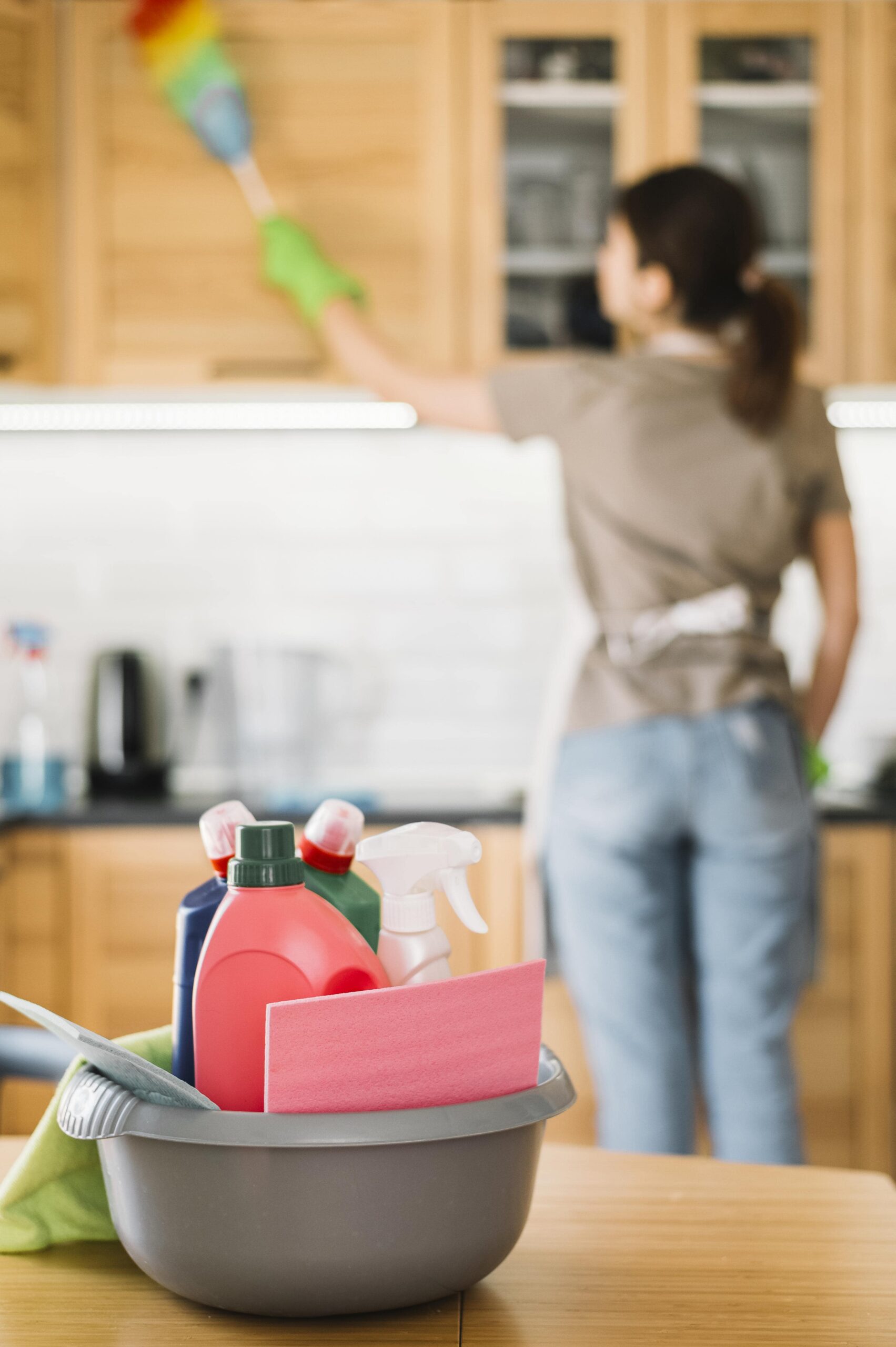 If only it was possible to completely tenant-proof your property.
There’s bound to be some wear and tear during a tenancy. After all, you’re renting out a home. People are living there, and that means there’s going to be some scuffing on walls and floors, just like in your own home.
That doesn’t mean you can’t minimize the general deterioration that’s likely to occur.
As a real estate investor, it’s important to have a long-term strategy for maintaining and improving your investment property. A good landlord is always thinking five or ten years down the road, and in order to do that, it’s crucial to be proactive in preventing excessive damage to your rental properties even while a tenant is in place.
While wear and tear is inevitable, there are steps you can take to keep your properties in good condition. As Palm Springs property managers, we are attentive to these tips and strategies, and we’re sharing several of them with you today. Here are some of the best ways to minimize the wear and tear tenants can cause on your property while they’re living there, so that you can save money and protect the condition and value of your investment over the long term.
If only it was possible to completely tenant-proof your property.
There’s bound to be some wear and tear during a tenancy. After all, you’re renting out a home. People are living there, and that means there’s going to be some scuffing on walls and floors, just like in your own home.
That doesn’t mean you can’t minimize the general deterioration that’s likely to occur.
As a real estate investor, it’s important to have a long-term strategy for maintaining and improving your investment property. A good landlord is always thinking five or ten years down the road, and in order to do that, it’s crucial to be proactive in preventing excessive damage to your rental properties even while a tenant is in place.
While wear and tear is inevitable, there are steps you can take to keep your properties in good condition. As Palm Springs property managers, we are attentive to these tips and strategies, and we’re sharing several of them with you today. Here are some of the best ways to minimize the wear and tear tenants can cause on your property while they’re living there, so that you can save money and protect the condition and value of your investment over the long term.
Set Clear Expectations Before Move-In
One of the best ways to avoid excessive wear and tear is to set clear expectations with your residents from the get-go. This means being upfront about what is and isn’t allowed in the property, including any restrictions on smoking, pets, and alterations to the home. Don’t let them paint the walls any color they want. Don’t allow them to move in their own appliances. Not only can these things increase the liability you take on when renting out a home, it can also open you up to more wear and tear than you’d like. We cannot overstate the importance of having a thorough move-in/move-out checklist that is completed by both you and your tenants during the move-in. This will help to avoid any disputes down the road about what was already damaged before the tenant moved in. It documents the condition of your property before your tenants took possession. You’ll need this. Have a candid and ongoing conversation with tenants about what you expect when it comes to cleanliness and the speed with which they report repair needs. Avoiding deferred and unreported maintenance is a huge necessity when it comes to limiting deterioration and wear and tear.Conduct Regular Inspections and Maintenance Walk-Through Appointments
We have talked about the importance of a move-in and move-out inspection. You’ll conduct those on your own before and after a tenant is in place. Regular inspections are also going to help you prevent small problems from becoming big ones. Schedule annual or bi-annual inspections of your properties to catch issues early on, such as leaks, mold, or damage to walls and appliances. Inspections also give you an opportunity to remind tenants of any rules or guidelines they may have forgotten about and to make sure they are taking care of the property as they should. Include this as a maintenance walk-through in your lease agreement. Let tenants know that you’ll be conducting such a walk-through at least once a year, and make sure to provide plenty of notice so they can prepare for your visit.Invest in High Quality, Durable Materials
Don’t cut corners when it comes to the materials and supplies you use on your property. Going cheap will only increase the wear and tear that’s left behind between tenancies. When you are renovating or updating your rental property, it’s important to invest in durable and long-lasting materials. This means investing in:- High-quality paint that won’t need to be replaced every year
- Durable flooring, whether it’s high-grade carpet or hard surface
- Energy-efficient appliances that are designed to withstand heavy use
Address Maintenance Issues Promptly
As we said, deferred maintenance will only lead to more wear and tear. It will also lead to more expensive repairs. If your tenant contacts you with a maintenance issue, it’s important to address it as soon as possible. Minor repairs left unfixed can quickly turn into costly repairs down the line. Prompt response to maintenance issues also shows your tenant that you care about their comfort and safety, and can increase the likelihood of renewing their lease. You also want to encourage your residents to make maintenance requests promptly. They might wait to tell you about something because it seems minor. Let them know that you’d like to receive the news right away. This will allow you to be more proactive, saving money and avoiding deterioration.Nurture Tenant Relationships
 Finally, it’s important to encourage tenant responsibility for the property. This can be achieved through lease clauses that outline the tenant’s obligations, such as keeping the property clean and reporting any maintenance issues promptly. Regular communication with tenants is also important, as it reminds them of their responsibility to take care of the property.
When you have a good tenant relationship in place, you’ll find that there’s less wear and tear to deal with at the end of a tenancy and almost no reason for disputes or conflicts over the security deposit. Remember that you’re required to offer a pre-move out inspection before they vacate. This can help you avoid any extra wear and tear, too.
Minimizing the wear and tear tenants can cause on your property requires a combination of clear communication, proactive measures, and investing in durable materials. By setting clear expectations, conducting regular inspections, investing in quality materials, addressing maintenance issues promptly, and encouraging tenant responsibility, you can keep your rental properties in good condition and save money in the long run.
Don’t forget the importance of tenant relationships. And, if you’d like some professional help from a Palm Springs property manager, we can provide it. Contact us at Xepco Properties, and we’ll eliminate a lot of potential wear and tear.
Finally, it’s important to encourage tenant responsibility for the property. This can be achieved through lease clauses that outline the tenant’s obligations, such as keeping the property clean and reporting any maintenance issues promptly. Regular communication with tenants is also important, as it reminds them of their responsibility to take care of the property.
When you have a good tenant relationship in place, you’ll find that there’s less wear and tear to deal with at the end of a tenancy and almost no reason for disputes or conflicts over the security deposit. Remember that you’re required to offer a pre-move out inspection before they vacate. This can help you avoid any extra wear and tear, too.
Minimizing the wear and tear tenants can cause on your property requires a combination of clear communication, proactive measures, and investing in durable materials. By setting clear expectations, conducting regular inspections, investing in quality materials, addressing maintenance issues promptly, and encouraging tenant responsibility, you can keep your rental properties in good condition and save money in the long run.
Don’t forget the importance of tenant relationships. And, if you’d like some professional help from a Palm Springs property manager, we can provide it. Contact us at Xepco Properties, and we’ll eliminate a lot of potential wear and tear.

